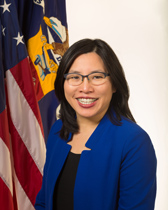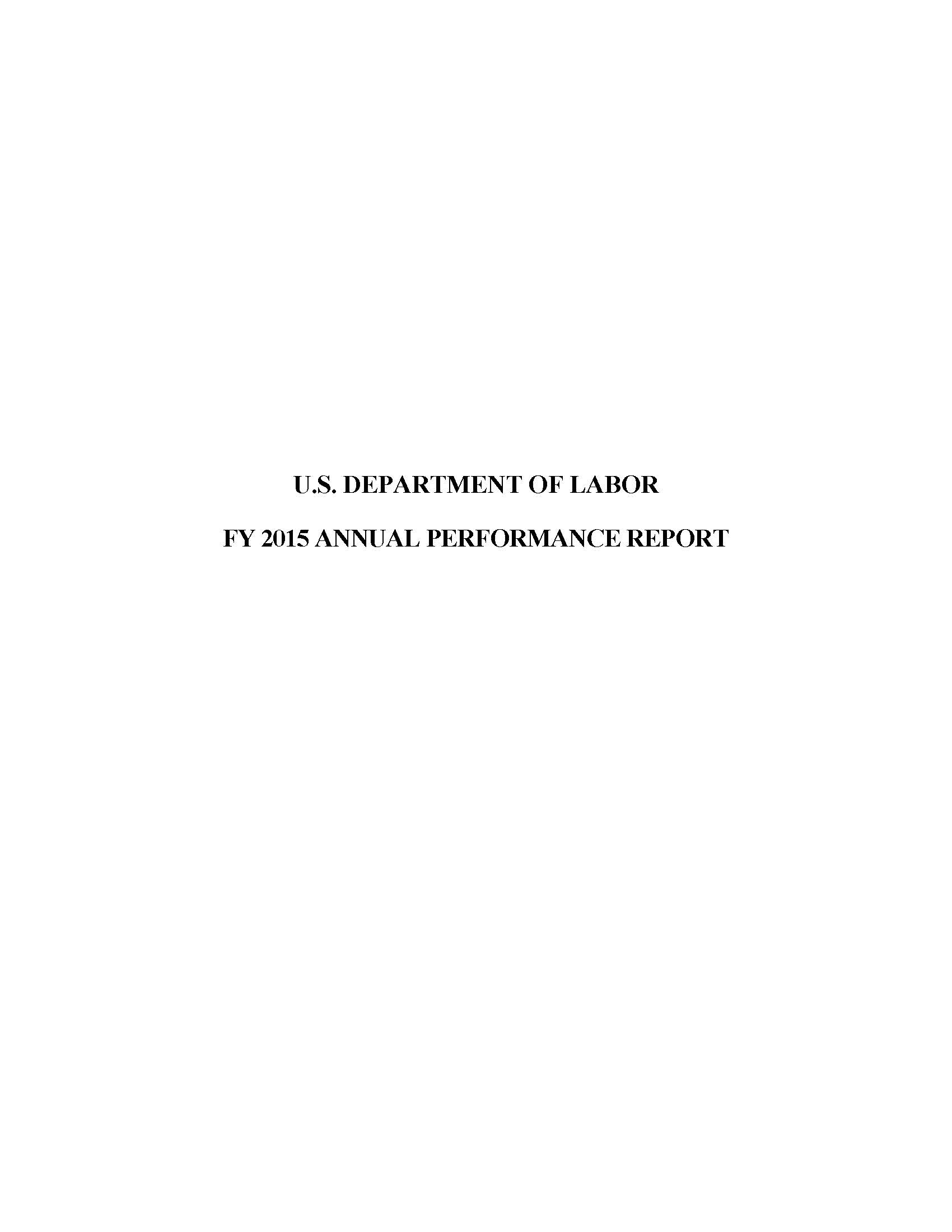- Home
- Agencies
- Department of Agriculture
- Department of Housing and Urban Development
- General Services Administration
- Department of Commerce
- Department of the Interior
- National Aeronautics and Space Administration
- Department of Defense
- Department of Justice
- National Science Foundation
- Department of Education
- Department of Labor
- Office of Personnel Management
- Department of Energy
- Department of State
- Small Business Administration
- Environmental Protection Agency
- Department of Transportation
- Social Security Administration
- Department of Health and Human Services
- Department of the Treasury
- U.S. Agency for International Development
- Department of Homeland Security
- Department of Veterans Affairs
- Goals
- Initiatives
- Programs
Primary tabs
Key to Changes
This text is Revised text
This word has been added to the text
This text is Last Published text
This word has been removed from the text
Modifed styling with no visual changes
FY 16-17: Agency Priority Goal
Expand Registered Apprenticeships
Priority Goal
Goal Overview
In 2014, President Obama challenged our nation to expand ApprenticeshipUSA, a way for companies to showcase their current work-based learning programs that meet industry and national standards for registration, and double the number of apprentices in the U.S. over the next five years. To support this challenge, the President announced new federal investments using existing funds to support job-driven Registered Apprenticeships through the American Apprenticeship Initiative. While significant progress has been made, we must add another 250,000 apprenticeships over the next two years to reach this goal.
Registered Apprenticeship programs offer workers a way to start new careers with good wages and are a proven gateway to the middleclass. Workforce organizations, community colleges, and other education and training institutions must work with employers to develop this earn-while-you-learn employment and training strategy. According to DOL data, graduates of Registered Apprenticeship programs earn an average of $60,000 a year and over 8 in 10 graduates retain their employment 9 months after exiting their apprenticeship training.[1] Every federal dollar spent on apprenticeship has yielded roughly $27, a significant return on federal investment.[2]
Building on historic bipartisan support from Congress and leadership across a broad range of states and industry partners, DOL has awarded nearly $90 million in funding appropriated for the ApprenticeshipUSA program to further the goal to double and diversify Registered Apprenticeships by 2019. The $90 million consists of strategic investments to accelerate and expand state apprenticeship strategies and grow the use of apprenticeships in new industries while ensuring that these profound educational and economic opportunities are within reach for more Americans. These new investments are the result of a bipartisan agreement to provide the first-ever programmatic funding for Registered Apprenticeship through the Fiscal Year 2016 spending bill.
[1] DOL/ETA and the Kansas Department of Commerce (Kansas) have a Memorandum of Understanding that enables ETA’s national programs access to wage records through the Wage Record Interchange System (WRIS) and the Federal Employment Data Exchange System (FEDES) in order to calculate the WIA common measures. This arrangement is the Common Reporting Information System (CRIS).
[2] See page 39 of “An Effectiveness Assessment and Cost Benefit Analysis of Registered Apprenticeship in 10 States” by Mathematica Policy Research. http://wdr.doleta.gov/research/FullText_Documents/ETAOP_2012_10.pdf
Strategies
The Employment and Training Administration (ETA) is building on successful Registered Apprenticeship models, driving ongoing innovation and supporting industry, state and regional strategies to expand quality apprenticeships. Collective efforts are aimed at the overarching goal to increase the number of apprentices. In FY 2017, DOL will continue to develop employer engagement initiatives including the Sectors of Excellence in Apprenticeship to create greater efficiency in program development for high demand industries. The FY 2017 target is only partially based on the $175 million American Apprenticeship grant investment which is expected to produce 34,000 new apprentices over the five year life-time of the grants. Additional investments were made available through the FY 2016 budget appropriation, which enacted $90 million for ApprenticeshipUSA program activities, the first-ever Congressionally approved funding to support wide-scale apprenticeship expansion across the United States. The new ApprenticeshipUSA program supports state led efforts to build a uniquely American Apprenticeship system, encourage industry led efforts to expand apprenticeship models in emerging high-growth sectors, and support apprenticeship diversity initiatives.
All investments support innovative, job-driven approaches that result in achieving the Department’s goal to double and diversify Registered Apprenticeships that train workers with 21st century skills to meet employer and industry workforce needs. The FY 2017 budget request is a continuation of this new annual funding stream.
ETA strategies and/or activities to expand registered apprenticeship include the following:
- Advance customer-focused, sector-specific marketing campaigns, including National Apprenticeship Week and the branding of ApprenticeshipUSA.
- Leverage Leaders of Excellence in Apprenticeship Development, Education, and Research (LEADERs) to support apprenticeship expansion in targeted industries.
- Promote the apprenticeship model to potential new employers and industry leaders: international companies doing apprenticeships abroad, large high profile companies, and government and other public service organizations.
- Accelerate technical assistance to businesses through sectors of excellence in apprenticeship (SEAs) in each of ETA’s six regions.
- Engage in collaboration with one-stop delivery system on strategies to expand the utilization of Registered Apprenticeship under WIOA.
- Provide technical assistance to existing apprenticeship program sponsors to expand their existing programs.
- Support American Apprenticeship Initiative (AAI) grantees launch apprenticeship models in high-growth fields, align apprenticeships to pathways for further learning and career advancement, and scale successful apprenticeship models.
- Create technology solutions to improve the customer experience and reduce the time necessary for developing and registering programs.
- Promote public service apprenticeship in federal and state government including the Pathways through Apprenticeship program being piloted in partnership with the Office of Personnel Management (OPM) to expand apprenticeships to federal agencies using OPM’s Pathways program to attract student interns and recent graduates.
Progress Update
Fourth quarter highlights include:
- Increasing the size of the national Registered Apprenticeship system by 130,000 active apprentices compared to when ETA began the effort to double the number of active apprentices in FY 2014 (from 375,425 to 505,371 apprentices). This includes registering over 574,000 new apprentices and supporting completion of over 146,000 apprentices nationwide during this three year timeframe.
- Awarding $50.5 million in grants to help states develop and implement comprehensive strategies to support apprenticeship expansion. The grants are intended to engage industry and workforce intermediaries, employers, and other partners to expand and market apprenticeship to new sectors and underserved populations; enhance state capacity to conduct outreach and work with employers to start new programs; and expand and diversify participation in apprenticeship through state innovations, incentives, and system reforms. Grants were awarded to 37 successful state applicants with grant awards ranging from $700,000 to $2,700,000.
- Issuing $20.4 million in contract to 10 national industry intermediaries and 4 national equity partners to expand apprenticeship opportunities across the U.S. The national equity partnerships will increase gender, racial, ethnic and other demographic diversity and inclusion in apprenticeships, among traditionally underrepresented populations. These contracts focus specifically on increasing apprenticeship opportunities for women, people of color, opportunity youth, people with disabilities, among other underserved populations.
Next Steps
|
The ETA Office of Apprenticeship will:
|
Contributing Programs & Other Factors
ETA’s Office of Apprenticeship
No Data Available











